
Related
Topics
Journalists are killed around the world simply for doing their jobs. Miguel Moreno and Kurt Schork were foreign journalists covering a war abroad. But the risks on the job increase greatly for reporters covering their own countries. Colombia has the highest rate of murders of reporters in the world. Former Democracy Now! producer Maria Carrion was just in Bogota. She spoke with Ignacio Gomez, who for fourteen years has headed the investigations unit at Bogota’s daily newspaper El Espectador, and is also executive director of the Foundation for Freedom of the Press in Colombia. [includes rush transcript]
Gomez had to leave Colombia for almost a year in the early 1990s after he published a list of properties owned by the late Pablo Escobar, chief of the Medellin Cartel. After the list was published, Gomez said Escobar threatened to have him killed.
Guest:
- Ignacio Gomez, Head of investigations at Bogota’s daily newspaper El Espectador and executive director of the Foundation for the Freedom of Press in Colombia. Ignacio Gomez recently broke a story about US ties to the 1997 Mapiripan Massacre, when forty-nine civilians in southwest Colombia were killed by paramilitary forces aided by Colombian soldiers that had been trained by US Special Forces. We will be bringing you that story next week.
Related link:
Transcript
Journalists are killed around the world simply for doing their jobs. Miguel Moreno and Kurt Schork, foreign journalists covering a war abroad. But the risks on the job increase greatly for reporters covering their own countries, as in Colombia, which has the highest rate of murders of reporters in the world.
Democracy Now! producer Maria Carrion just returned from Bogota. She spoke there with Ignacio Gomez, who for fourteen years has headed the investigations unit at Bogota’s daily newspaper, El Espectador. He is also executive director of the Foundation for Freedom of the Press in Colombia. Gomez had to leave Colombia for almost a year in the early ’90s after he published a list of properties owned by the late Pablo Escobar, chief of the Medellin cartel. After the list was published, Gomez said Escobar threatened to have him killed. He will be translated by Democracy Now! producer David Love. And this is Maria asking him a question in Bogota:
MARIA CARRION: Ignacio Gomez, as well as being the editor of investigations for Bogota’s daily newspaper, El Espectador, you’re also — you also head the Foundation for Freedom of the Press here in Colombia, and I wanted to ask you what freedom of the press means in Colombia. What does that term mean here?
IGNACIO GOMEZ: [translated] For the past three years, we have been trying to come up with the number of journalists who have been killed here. So far, we have come up with a report that says that 152 journalists have been murdered in the past twenty years. From that first analysis, you could also say that if you looked from the number of, say, bakers who have been murdered, or hairdressers, we would also come up with a very large number of them, because Colombia is the third country in the world with the highest rate of violent deaths. So it is logical that people of all professions are killed at a higher rate here.
But if you look at these numbers more carefully, you will find that despite the general violence here in this country, and although some journalists may have been killed during robberies or in crimes of passion or because they were involved in some form of corruption, there is a huge number of journalists who have been murdered year after year in order to silence them. And these murders are just the tip of the iceberg, because journalists here have also been silenced through other means: some with exile, others by fear, others through blackmail. And so, the number of silenced journalists, on top of murdered journalists, continues to multiply.
Many more journalists have been threatened than have been killed. And many more have been intimidated, even if not directly threatened, so that they wouldn’t publish a particular story. And many, many of them have been co-opted and manipulated through other means, not only through fear and direct threats. There are many who have been kidnapped. They have kidnapped more and more journalists in the last four years. Just in the past year, over 100 journalists were kidnapped. They were all kidnapped in order to be pressured to change their reporting.
But Colombia is a country full of contradictions. And so, despite all of these limitations, it has a law that deals with the freedom of information that is even older than that of the Freedom of Information Act in the United States. It allows journalists to sue in order to obtain information for the public. And despite over 180 years of internal war, Colombia has a long tradition of good media. And its journalism is somewhat prestigious within Latin America.
So what do I, as a journalist, think of freedom of the press? Well, I have been with El Espectador for fourteen years. And since I arrived, eleven of my colleagues have been murdered. And at the same time, the newspaper’s faced bankruptcy. And it went from being owned by a family that practiced a type of unique independent journalism, free from any type of interests, to now belonging to one of the most powerful financial groups in the country. The newspaper was also bombed, and the drug traffickers threatened any businesses that advertised in El Espectador. My newspaper survives like the majority of Colombians, by sheer miracle.
AMY GOODMAN:
Maria then asks Gomez if he personally has received the types of threats that he speaks of. He says:
IGNACIO GOMEZ: [translated] I would rather not talk about this, because when you talk a lot about death threats in Colombia, you start to court death. People begin to smell death around you.
AMY GOODMAN:
Ignacio Gomez recently broke a story about US ties to the 1997 Mapiripan Massacre, when forty-nine civilians in southwest Colombia were killed by paramilitary forces aided by Colombian soldiers who had been trained by US Special Forces. We’ll be bringing you that story next week. And that interview done by Maria Carrion, Democracy Now! producer, who just returned from Colombia. Ignacio Gomez is head of investigations at Bogota’s daily newspaper, El Espectador, and executive director of the Foundation for the Freedom of the Press in Colombia.

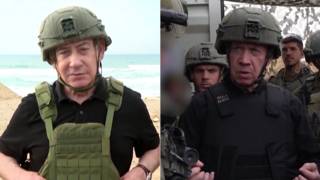
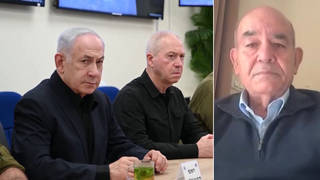
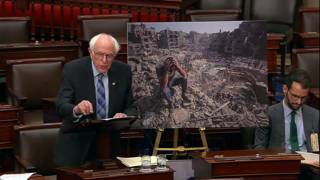
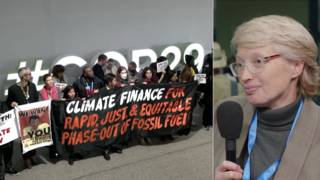




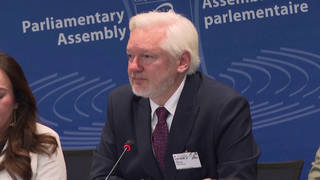
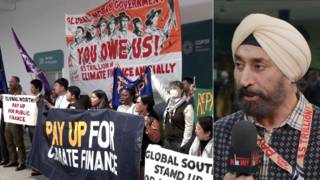
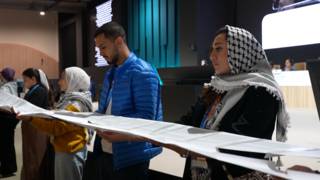
Media Options